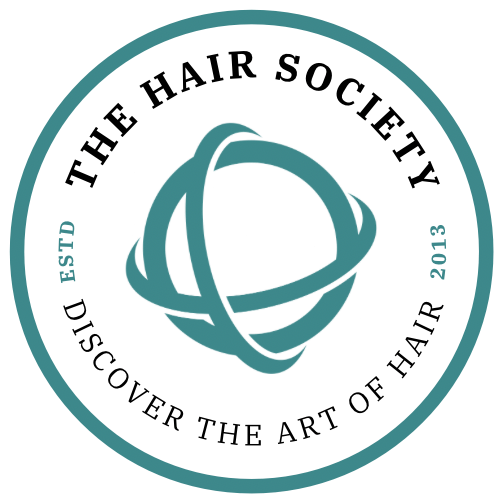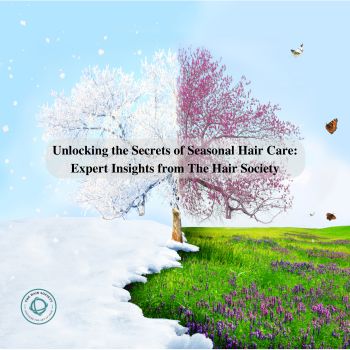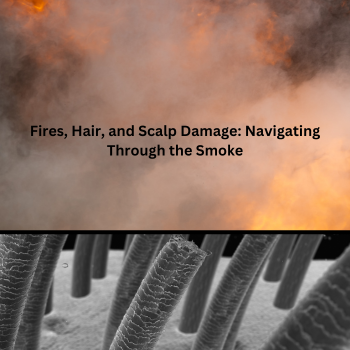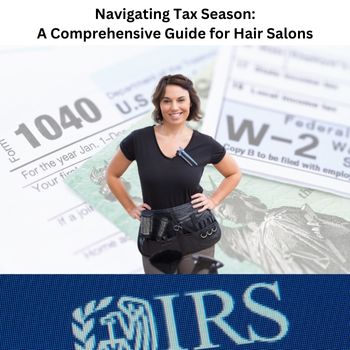 Trichology: What is it and Why is it Important?
Trichology: What is it and Why is it Important?
According to Merriam-Webster, a trichologist is “a person who specializes in hair and scalp care and treatment of associated conditions.” More and more stylists and salon owners are familiarizing themselves with Trichology because it is so important, especially if you are working with hair and looking at people’s scalps all day. Cosmetology school teaches stylists plenty about hair but not enough about the scalp, and that’s why studying Trichology is vital in being a hairstylist.
There are so many conditions that are being overlooked by stylists because they simply are not trained on the scalp. A common condition found is Seborrheic dermatitis, which is a skin condition seen on the scalp, that is red, dry, itchy, and flaky skin. This is not a contagious disease, nor does it mean your client is contagious; it is just hard for them to see for themselves because it is on the scalp. This condition occurs in 11% of the population and is most common for those who are from 30 to 60 years old. As a stylist, it is so helpful to catch this and tell your client the best way to create a treatment plan, and it could also change what products you use on their hair and recommend to them.
Folliculitis is another common scalp condition found; it is an inflammatory disorder of the hair follicles. They are seen as small, very itchy, red bumps. They may visible as crusted or scabs because of how itchy they are. There are multiple causes for this condition, which could be bacteria, yeasts, or even mites. There are over-the-counter ways to ease the itch, but it is essential to see a dermatologist figure out the underlying cause and find an effective treatment. Many adults get an itchy scalp and don’t think much of it, and this is why it is your job as a stylist to see it and point it out.
Another common condition is scalp psoriasis; this condition is where the skin on the scalp has dry, raised, scaly patches. It is a condition that can affect your entire scalp or come up in small patches. It can spread onto the forehead or to the nape of the neck. This one can be felt by the client, but they may not know what it is or how to create a treatment plan. This can result in itching, burning, dandruff, and even hair loss, so it is vital to start the treatment plan as soon as possible. As a stylist, you can recommend over-the-counter treatment plans or direct them in the route of a dermatologist to get prescription medication for it.
Alopecia is a severe condition of the scalp that is vital to point out for your clients. This condition impacts about 6.8 million people in the United States alone. Alopecia is where hair falls out in small patches, or in extreme cases, the whole head of hair is lost. This condition can affect anyone, male or female, young or old. There are no actual cures for alopecia yet, but there are many proven modalities that help the hair grow back more and fuller.
It is so important as stylists to be aware of these conditions, to be able to point them out and help create an action plan to prevent any further issues. As the person who can see the client’s scalp better than anyone else, it is your job to be able to identify these issues; otherwise, they could be left untreated for months, causing worse issues down the line. Not only does this prevent problems, but it can help your clients have a thicker, healthier head of hair for years to come. Scalp health is directly correlated to hair health, so it is vital to know both topics.
 As a hairstylist, all you could want is to help your clients feel confident in their skin, and healthy hair is a considerable aid in achieving that objective. Keeping the scalp healthy will lead to healthy hair, but if there are underlying issues going on in the scalp, it could lead to hair loss. Hair loss is a massive cause of insecurities and lack of confidence in both men and women, and for some people, it just happens naturally, but for those where that is not the case, we want to be able to prevent it as much as possible.
As a hairstylist, all you could want is to help your clients feel confident in their skin, and healthy hair is a considerable aid in achieving that objective. Keeping the scalp healthy will lead to healthy hair, but if there are underlying issues going on in the scalp, it could lead to hair loss. Hair loss is a massive cause of insecurities and lack of confidence in both men and women, and for some people, it just happens naturally, but for those where that is not the case, we want to be able to prevent it as much as possible.
Trichologists not only study the scalp of the patient, but they look at the entire patient. They ask about their eating habits, medications they are taking, and even their water intake; they study the causes of hair loss, hair breakage, and diseases of the scalp and treatments. Learning Trichology can help you know which questions to ask and when to ask them.
The hair society is committed to helping stylists and salon owners get the necessary training to help not only their business but their clients. While working with The Hair Society, you will not be disappointed in the service given by highly educated professionals who are dedicated to helping you and your clients.
What The Hair Society Offers:
 The hair society offers many courses on Trichology, including The introduction to Trichology, anonline learning course to get stylists, barbers, and salon owners started into the world of Trichology. We also offer courses on how to integrate Trichology into daily business within your salon to help clients and help your business.
The hair society offers many courses on Trichology, including The introduction to Trichology, anonline learning course to get stylists, barbers, and salon owners started into the world of Trichology. We also offer courses on how to integrate Trichology into daily business within your salon to help clients and help your business.
The biggest takeaway from this is that scalp health is directly correlated to hair health. It is similar to a plant; if you have unhealthy soil for the plant to grow in, it won’t grow as strong and healthy. Ashairstylistss, it is so important to know whether or not a scalp is healthy, or not, and know-how to see the issue at hand. Being able to see and point out these issues to clients will show them the dedication you have to the health of their hair and to them. In the hair industry, you are constantly learning about new ways to style, color, and cut hair, and it is important for you to learn about the root of it all as well.
Staff Writer
Aimee Tober
The Hair Society
Discover the Art of Hair




